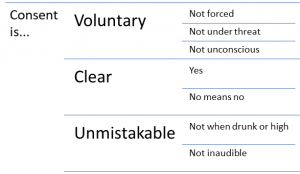[Trigger Warning: The following content contains information on domestic violence which some readers may find disturbing.]
You are in a live-in-relationship if you cohabit, i.e. share a house with your partner without marrying him or her. It is considered a domestic relationship between an unmarried adult woman and an unmarried adult male who live or, at any point of time lived together in a shared household. Unlike a marriage, a live-in relationship is not legally regulated.. For example, you do not have to register the relationship, and to end a live-in relationship, a divorce is not required, and you may end it in any manner you see fit.
A live-in relationships are considered valid under the law only if it is in the “nature of marriage” i.e. the relationship has some essential characteristics of a marriage, even if it is not legally recognized as a marriage. The courts, while pronouncing judgments on live-in relationships, compare them to marriages to determine whether the relationship has the characteristics of a regular marriage.
Courts, through various cases, have laid down the conditions for live-in relationships to be considered as relationships in the “nature of marriage”. These are:
Duration of the Relationship
You and your partner must have voluntarily cohabited for a significant period of time, like months or years in a shared household. A few weeks,a weekend or a one night stand, does not count as a live-in relationship.
Socialisation in Public
You and your partner should be socialising publicly with friends, relatives and others, as if you and your partner are husband and wife .
Age and Marital Status
You and your partner should be able to qualify to enter into marriage i.e.neither of you should have a spouse at the time of entering into the relationship, and both of you should be above the legally valid age of marriage i.e. 18 years.
Sexual Relationship
You and your partner must have a sexual relationship that includes emotional and intimate support2.
Financial Arrangement
You and your partner have a financial arrangement similar to that of a husband and wife. For example, you have pooled in your resources together or financially support each other, such as through shared bank accounts, assets in joint names, long term business investments, etc.
Domestic Arrangement
If one of you, especially the woman, is entrusted with the responsibility to run the household and do domestic work – cleaning, cooking, upkeep of the house, etc. then this is a domestic arrangement similar to a marriage.
Intention and conduct of the parties
Common intention of the parties as to what their relationship is and their respective roles and responsibilities, primarily determines the nature of that relationship.
Children
Having children is a strong indication that the nature of the relationship is similar to that of a marriage, and that the participants have a long-term orientation towards the relationship.
If the criteria given above are not met, then your relationship will not be a live-in relationship recognized by Courts.
Some states provide handbooks for ASHA workers where you can find more information on forms on violence, where it can happen and how to file a complaint to seek protection against domestic violence. For example, see this handbook published for ASHA in Chattisgarh, Delhi, Jharkhand, Madhya Pradesh and Uttarakhand.
